Comfortably Above Low Estimate, Sotheby's Americana Week Brings $14.4 Million
The Ptarmigan Vase: A Monumental Copper, Silver and Gold Mokume Vase, the design attributed to Paulding Farnham, circa 1900-05. Photo Sotheby's
NEW YORK, NY.- Sotheby’s Americana Week concluded with a 3-day auction total of $14.4 million, comfortably above the cumulative low estimate of $11.5 million. The sales brought significant prices for American furniture, silver and folk art, led by An Important Searls Family Chippendale Highly Inlaid Cherrywood and Mahogany Chest of Drawers that achieved $872,500 in the Saturday afternoon session of Important Americana. The dedicated auction of Property from the Hascoe Family Collection performed strongly on Sunday, bringing $5,446,466 and selling 92% by lot. Additional Hascoe property will appear in sales throughout the spring auction season, culminating in a second dedicated auction in London devoted to the Hascoes’ impressive collection of Czech art.
Friday, 21 January
The first day of the Important Americana sale saw major prices for silver pieces with exceptional histories. The session was led by The Ptarmigan Vase: A Monumental Copper, Silver and Gold Mokume Vase, circa 1900-05, which sold for $662,500 to a Canadian dealer on behalf of a prominent Canadian museum (pre-sale est. $80/120,000*). Tiffany & Co. designer Paulding Farnham invested heavily in the Ptarmigan Mines in British Columbia around the turn of the century, and designed The Ptarmigan Vase at the time to celebrate what he hoped would be a highly lucrative venture. Through intensive research, Sotheby’s discovered that the five signatures at the base can be traced to master craftsmen who worked for Tiffany during the period.
The Ptarmigan Vase: A Monumental Copper, Silver and Gold Mokume Vase, the design attributed to Paulding Farnham, circa 1900-05. Photo Sotheby's
of inverted pear form, one side mounted with a gold medallion of the seal of the Province of British Columbia above applied silver and copper diagram of the exact geographical position of the Ptarmigan Mines, the sides also engraved with figures including an eagle, large stylized mask, Native American symbols, and a small crescent moon, the shoulders applied with stylized bird's feet below a neck incorporating a band of eyes and a projecting bird's beak, perched on the rim is a 10 1/2 in. ptarmigan with copper beak, talons and gold eyes, the base rim applied with stylized pine trees all derived from Northwest Coast Indian lore, the finished base with concave recess and central silver and copper baluster finial. the base engraved with five signatures HANNWEBER, SWAMBY, THOMA, BARKER, and SPENGLER; height 25in. Estimate 80,000—120,000 USD. Lot Sold 662,500 USD
PROVENANCE: Paulding Farnham, to his wife
Sally James Farnham, to their son
James Farnham, thence by descent
NOTE: This exceptional vase has descended in the family of Paulding Farnham, through his wife, sculptor Sally James Farnham. Before her death in 1943, Sally compiled a detailed list of artworks with their maker's that she wished to be distributed among her family members upon her passing. The present lot, described as "Ptarmigan Vase (Paul Farnham)" was to be given to her first-born child, James.
Paulding Farnham's first association with the Ptarmigan Mines in British Colombia, Canada began about 1898. Also called the "Red Line", the mountain was rich with copper, gold and silver – the same minerals from which the Ptarmigan Vase is constructed. Farnham had initially believed the mines to be an exciting financial opportunity for his family and poured extensive personal resources into the venture (G.P.V. and Akrigg, Helen B. British Colombia Places and Names, 1997 p. 78). In 1901 the Farnham family purchased a ranch at the base of the mountains in the town Windermere, BC (Hassrick, Peter H. The Art of Being an Artist Sally James Farnham, American Sculptor, 2005, p. 23). The following year it was announced in The British Colonist that a prominent peak in the Selkirk mountain range "is now to be known as Mount Farnham, in honor of Paulding Farnham of New York, promoter of the Ptarmigan mines of the Selkirks. Mount Farnham is sentinel of the range, rising 12,000 feet, first to 10,000 feet, then by a perpendicular castle-like rook 2,000 feet higher. Mr. Farnham's property lies at the base of this mountain, and it is indeed well named, for Mr. Farnham has greatly contributed to the development of the mines in this district" (The British Colonist, 30 October 1902, p. 2).
Around 1904-05 it became apparent that the Ptarmigan mines were not the successful financial endeavor that Farnham had hoped they would be. Despite the venture's bleak prospects, Farnham continued to sink money into the project. He began to spend considerable amounts of time in British Columbia, especially after his departure from Tiffany & Co. in 1908 (Hassrick: 2005, p. 31). It was written of him: "Mr. Farnham stands out like his mountain among mining men in this- he has lost a fortune like a man and paid every cent he owed (an unusual thing with defunct mining companies)" (G.P.V and Akrigg: 1997, p. 80).
Farnham's prolonged absences began to take their toll on his marriage and family life, and on 27 July 1914 Sally filed a petition for divorce on the grounds of abandonment. The couple officially divorced the following year, and Farnham took up residence in California a few years later (Hassrick: 2005, p. 35). By the time the divorce was granted Farnham had exhausted nearly all of his personal resources. He took very few possessions with him into his post-divorce life and Sally appears to have retained the property in their home and studio in New York, including the Ptarmigan Vase. The Ptarmigan Vase is among the artworks listed in a 1936 inventory of the contents of Sally's studio.
Given Farnham's enthusiasm for the Ptarmigan mines, the Ptarmigan Vase was probably made towards the beginning of the venture. This time period also corresponds with Farnham's burgeoning interest in Native American and Aztec design. Although Tiffany & Co. had been producing Native American-inspired silver wares since the mid-1870's, Farnham revived the firm's design vocabulary in the late 1880's to include bolder motifs, pictograms, and forms directly based on Native American basketwork and pottery. Examples of Farnham's Native American designs include the four "Pueblo" bowls exhibited in the 1893 Chicago Exposition, the "Navajo" vase and "Zuni" and "Hupa" bowls
Other silver highlights from Friday included An Unusual American Silver Teapot Engraved with Hunters in a Landscape, Jacob Hurd, Boston, circa 1750 that more than doubled its pre-sale high estimate to sell for $278,500. The teapot bears the arms of Foxcroft, probably for Judge Francis Foxcroft, son of Francis Foxcroft, warden of King’s Chapel, and Elizabeth Danforth, daughter of Governor Danforth. General Nathanael Greene’s Enameled Gold Order of the Cincinnati, Designed by Major Pierre l’Enfant, and Construction Attributed to Duval & Francastel, Paris, 1784, which was offered by a direct descendent of Nathanael Greene, brought $242,500. The Revolutionary War hero was a founding member of the Society of the Cincinnati, and his signature appears with those of George Washington, Henry Knox and other officers on the charter drawn up on 13 May 1783.
An Unusual American Silver Teapot engraved with hunters in a landscape, Jacob Hurd, Boston, circa 1750. Photo Sotheby's
of inverted pear form on stepped circular foot and with partly faceted S-form spout, engraved on one side with contemporary arms in a rococo shellwork cartouche surrounded by scrolling foliage and panels of trellis, all surmounted by a fox head crest, opposite side with script initial P, the top of the pot and hinged cover finely engraved with a landscape of a village and fox hunting scenes including two houses, ducks swimming in a pond, a farmer smoking a pipe, running stags, boars, dogs, and two hunters on horseback pursuing foxes, one hunter with horn proclaiming: " the hounds are all out a ho ho ho", topped by a wood knop finial with engraved silver bud, marked twice on base HURD in rectangle (Kane mark D) and scratched ?Nillis 20 oz "3 " 0; weight: 21oz 12dwt gross: length 9 3/4 in. Estimate 70,000—100,000 USD. Lot Sold 278,500 USD
PROVENANCE: The arms are those of Foxcroft, probably for Judge Francis Foxcroft, son of Francis Foxcroft, warden of King's Chapel and Elizabeth Danforth, daughter of Governor Danforth. He married Mehitable Coney, daughter of John Coney, the famous goldsmith.
The teapot is engraved with the slightly later script initial P, almost certainly for their daughter Phoebe Foxcroft (1743-1812), who, on 12 July 1773, married Samuel Phillips, Jr (1743-1802), later Lt. Governor and founder of Phillips Academy, Andover MA. Samuel's parents' initials P/S*E appear on the Hurd porringer from the same collection, lot 171 in this sale.
Among the highly characterful engraving on the top of the teapot appears a house with a pediment enclosing a running fox as a rebus on the family name.
NOTE: A block-front chest from the same family was sold Sotheby's New York, 18 October 1986, lot 208, for the exceptional price of $660,000.
Saturday, 22 January
The day began with the auction of Important Americana from a Private Collection, which brought just under $1 million. The second session of the Important Americana sale in the afternoon was led by An Important Searls Family Chippendale Highly Inlaid Cherrywood and Mahogany Chest of Drawers, Attributed to Nathan Lombard, Sutton, Massachusetts, circa 1800, which achieved $872,500 and was the top lot of the sale (pre-sale est. $250/700,000). Few other comparable American chests are known with a shaped front and ambitious inlaid decoration of this exceptional quality. By the end of the day, the Important Americana auction brought $7,959,947 in total.
The Important Searls Family Chippendale Highly Inlaid Cherrywood and Mahogany Chest of Drawers, attributed to Nathan Lombard, Sutton, Massachusetts, circa 1800. Photo Sotheby's
Underside of top drawer inscribed in graphite Ebenezer Howard of Sturbridge. height 36 1/2 in. by width 44 1/2 in. by depth 21 1/4 in. Estimate 250,000—700,000 USD.Lot Sold 872,500 USD
PROVENANCE: Descended in the Searls family, who were in Pomfret, Connecticut by 1846. Hon. Charles Edwin Searls of Thompson and Putnam was born in Pomfret in 1846 and graduated from Yale University before becoming an attorney. He represented Thompson in the General Assembly in 1871 and was elected Secretary of State in 1881. This piece was likely owned by his mother, Carol Matthewson Searls; Skinner, American Furniture and Decorative Arts, October 24, 1999, sale 1953, lot 124
EXHIBITED:Skin Deep: Three Masters of American Inlaid Furniture, Milwaukee Art
Museum, November 22, 2003 – March 2, 2003
LITERATURE AND REFERENCES: David Hewett, "Skinner's Amereicana Sale Biggest Ever," Maine Antique Digest, December 1999.
NOTE: An exuberant New England interpretation of the Federal style, this serpentine cherrywood chest of drawers epitomizes the height of workmanship in rural Massachusetts. Few other comparable American chests are known with a shaped form and ambitious inlaid decoration of this exceptional quality.
Similar flamboyant inlaid decoration and construction practice is found in the work of Nathan Lombard (1777-1847), a cabinetmaker working in the Sutton area of Massachusetts. Born in 1777 in Brimfield, this highly skilled and creative craftsman may have apprenticed to a local cabinetmaker before establishing a business in 1798 in Brimfield.1 He married Delight Allen in Sturbridge in 1802 and they moved to Sutton soon after. As exhibited on a chest of drawers with his signature and the date April 20, 1800, this chest displays a serpentine façade, thick cherry veneer, chevron stringing, drawers with cherry cockbeading, feet combining C-scrolls, spurs and cusps, and a narrow strip of cherry attached to the back edge of the case top.2 Similar strips occur on many examples of Lombard's work, including on a sideboard that sold in these rooms, The Property of Dr. and Mrs. Henry C. Landon III, January 24, 2009, sale 8513, lot 68.3
This chest has the signature of Ebenezer Howard (1781-1854), a cabinetmaker of Sturbridge who appears to have worked with Lombard for a period of time, perhaps as an apprentice or journeyman. Ebenezer was born in Sturbridge in 1781 and married there in 1802. He signed other furniture attributed to Lombard, including a serpentine cherrywood chest in a private collection similar to the one offered here.4 A candlestand at Yale University attributed to Lombard bears an inscription "EH 1801" that may also refer to him.5
Five serpentine cherrywood chests are closely related to the one signed by Lombard. One belonged to Ezra Allen (1773-1866), his wife's second cousin, and stood in the chamber of his farmhouse in Holland, Massachusetts.6 A second example in a private collection with identical feet and lightwood banding is cited by Jobe and Pearce but has never been published. A third one lacking banding and economizing on the chevron stringing sold at auction in 1987.7 Two additional chests are fitted with concave columns decorated with inlay and capped with carved leaves like those found on the present chest.8 One of the aforementioned examples also exhibits husk and dot inlay, leaves, and an inverted icicle on the concave columns. The multicolored urn and vine motif on the top of this chest is also known on a desk-and-bookcase at Winterthur Museum on a flat-top desk-and-bookcase at the Milwaukee Art Museum, both attributed to Lombard.9 This distinctive inlay also appears on the candlestand at Yale mentioned above with the inscription "EH 1801," possibly referring to Ebenezer Howard.
When this chest was sold previously in 1999, it achieved the record price fora piece of Lombard furniture.
1 Brock Jobe and Clark Pearce, "Sophistication in Rural Massachusetts: the Inlaid Cherry Furniture of Nathan Lombard," American Furniture 1998, p. 165.
2 See ibid, fig. 5, p.
168.
3 See ibid, figs. 16 and 20, pp. 174-5.
4 The
chest was included in the Old Sturbridge Village exhibition, "Convenient and
Fashionable": Furniture from Island Massachusetts, 1790-1830, held from May
24-December 31, 2010.
5 See Jobe and Pearce, fig. 46, p.
188.
6 See ibid, fig. 15, p. 173.
7 Christie's,
The Collection of the Late Jeannette R. Marks, June 5-6, 1987, lot
593.
8 See Jobe and Pearce, fig. 16, p. 174. The
plainer chest originally belonged to Simeon and Susanna Clark of Hardwick,
Massachusetts is illustrated in William Short, "New Additions to a Group of
Federal Furniture," The Magazine Antiques (December 1991): p. 965, pl.
8.
9 See Jobe and Pearce, fig. 32, p. 181 and fig. 3, p. 166.
Saturday saw additional American furniture that greatly exceeded pre-sale expectations: A Very Fine Federal Flame Birchwood-Veneered and Ivory-Inlaid Mahogany Dressing Table, Attributed to Judkins and Senter, Portsmouth, New Hampshire, circa 1805 from a Massachusetts family soared past its pre-sale high estimate of $30,000 to achieve $278,500, while The Important Wells Family Diminutive Chippendale Carved Mahogany Marble-Top Mixing Table, New York, circa 1765 more than tripled its high estimate to bring $230,500.


A Very Fine Federal Flame Birchwood-Veneered and Ivory-Inlaid Mahogany Dressing
Table,, attributed to Judkins and Senter, Portsmouth, New Hampshire, circa
1805. Photo Sotheby's
Appears to retain its original hardware. Retains a dry early surface. height 39 in. by width 43 in. by depth 21 in. Estimate15,000—30,000 USD.Lot Sold 278,500 USD
PROVENANCE: A letter from the consignor states the following: This dressing table was gifted to me by my mother in the year 2000. It was purchased at some time by a member of the Parsons Family of Maine and before that, of Northampton , Massachusetts , from whom I am descended. My great grandmother Mary Parsons Hogan (1867-1945) was a great collector. She was the grand-daughter of Charles Parsons (1829-1904) who owned large tracks of land in southern Maine; including the towns of Alfred, Sanford, and the Kennebunk. Mary P. Hogan's husband was Jefferson Hogan and he was a ship captain with the Red Star Line, who were the importing/exporting side of the Kunard Liners (famously, the Titanic was the White Star Line and my great-grandfather was a good friend of Capt. Edward John Smith).
Charles' brother George Parsons donated the free library in Kennebunk and the Henry Parsons Way on the water, across from the famed St. Ann's Episcopal Church. Parsons Beach in Kennebunk has been in the Parsons family exclusively since Charles bought the land in 1873. Charles was a direct descendent of Cornet Joseph Parsons (descended of Sir John Parsons of Hereford , England , nee 1481). A great resource documenting the Parsons family is a William Parsons book The Parsons Family at Crescent Surf, (Sanford, ME: Edison Press, 1992). He writes on page six that Cornet Joseph Parsons "...was one of the original settlers who colonized Springfield, Massachusetts. He was a man of some prominence and was elected town surveyor and selectman ... A house built by him in 1658 is still standing in Northampton and is the oldest house in that city."
Sarah Llewellyn Parsons Alden
December 4, 2010
NOTE:A very closely related dressing table attributed to Judkins and Senter is illustrated and discussed in Brock Jobe, Portsmouth Furniture: Masterworks from the New Hampshire Seacoast, (Boston: Society for the Preservation of New England Antiquities, 1993), p. 143-144, no. 21. color pl. 5. Another very closely related example is in the collection of the Moffatt-Ladd House and Garden museum and is illustrated in Barbara McLean Ward's article "Lesser Known Treasures of The Moffatt-Ladd House and Garden Portsmouth, New Hampshire," Antiques and Fine Art, August/September 2006, p. 178.
American folk art in the sale was led by Ammi Phillips’s Portrait of a Rosy Cheeked Young Girl in a Pink Dress painted circa 1832, which exceeded its presale high estimate in achieving $290,500. The work is closely related to similar portraits by Phillips in the Edward Duff Balken Collection of American Folk Art at Princeton University as well as the American Folk Art Museum in New York. A rare and important Fishing Lady/Shepherdess and Piper Canvaswork Picture, done by Polly Burns, Boston, circa 1768 that brought $122,500 is one of the earliest and most extravagantly-worked schoolgirl embroideries done in the mid-18th century in pre-Colonial Boston by the daughters of Massachusetts’s most prestigious families.

Ammi Phillips (1788-1865), Portrait of a Rosy Cheeked Young Girl in a Pink
Dress.
Buttford in 1930. Primitive – called in family "Hannah Standish."; oil on canvas,31 in. by 25 in.Painted circa 1832. Estimate 175,000—225,000 USD. Lot Sold.
290,500 USD
LITERATURE AND REFERENCES: The Salisbury portrait is illustrated and discussed in Revisiting Ammi Phillips; Fifty Years of American Portraiture by Stacy Hollander, curator, Howard P. Fertig, research curator, New York, 1994, p. 41, PL XXXVIII.
NOTE:A closely related portrait of a child with dark hair, wearing a pink dress, painted by Phillips, circa 1832, is in the Edward Duff Balken Collection of American Folk Art at Princeton University, and is illustrated and discussed in Charlotte Emans, A Window into Collecting American Folk Art: The Edward Duff Balken Collection at Princeton, 2000, pp. 59-61.
Another comparable portrait is that of James Mairs Salisbury of Greene County, New York, painted circa 1835, now in the collection of the American Folk Art Museum, New York. Both Salisbury and the Balken collection portrait at Princeton University are part of a series of portraits of seated children in red costumes painted by Phillips from 1830 to 1835. The present example has the additional detail of senuous piping on the waistband and deep points on the collar and sleeve.
Sunday, 23 January
Property from the Hascoe Family Collection: Important American & English Furniture, Fine & Decorative Art performed strongly on Sunday, achieving $5,446,466 and selling 92% by lot. The sale was led by An Important Pair of American Silver Wine Cups, Paul Revere, Jr., Boston, 1792 that brought $752,500, far exceeding its pre-sale high estimate of $200,000. The cups were commissioned by Moses Michael Hayes, who founded The Massachusetts Bank in 1784, which operates today as Bank of America. During his time in Boston, Hayes was a friend, business partner and an exceptional patron of Paul Revere.




An Important Pair of American Silver Wine Cups, Paul Revere, Jr., Boston,1792. Photo Sotheby's
both engraved with original monogram MRH for Moses Michael Hays and his
wife Rachel in a bright-cut oval suspended from a ribbon bow, the other side
engraved CM 1865 and EC 1865 for Caroline Myers Cohen and her husband Edward
Cohen, each marked near upper rim pellet REVERE, undersides of bases with
museum loan numbers 735.1973 and 74?.1973;weight:10 oz 3 dwt (316 g); height 5 3/8 in. Estimate 100,000—200,000 USD. Lot Sold 752,500 USD
PROVENANCE:Moses Michael Hays and Rachel Myers Hays, by descent to
Judith
Hays Myers and Samuel Myers, by descent to
Samuel Hays Myers and
Eliza Kennon Mordecai Myers, by descent to
Caroline Myers Cohen and
Edward Cohen
Ex collection Mark Bortman
Bortman-Larus Americana
Collection
Harold Sack
LITERATURE AND REFERENCES:Jane Bortman, "Moses Hays and his Revere silver", Magazine Antiques, October 1954, pp. 304-305
Patricia E. Kane, Massachusetts
Silversmiths and Jewelers, p. 845
Jeannine Falino and Gerald W. R.
Ward, New England Silver & Silversmithing 1620-1815, p. 170
NOTE:Moses Michael Hays was born in New York on May 9, 1739 to Dutch immigrant parents Judah Hays and Rebecca Michael Hays. Judah, a merchant, introduced his son to the family retail and shipping business at a young age, and upon his death in 1764 left the business and the majority of his assets to Moses, who was then twenty-five years old. Two years later in 1776, Moses married Rachel Myers, sister of acclaimed New York silversmith Myer Myers. Moses and Rachel were deeply grounded in their Jewish faith and were committed to numerous civic and charitable causes throughout their lives. In New York, they were members of the Congregation Shearith Israel, where Moses served as vice president in 1766 and as president the following year (see the website for the American Jewish Historical Society). Additionally Moses and his brother-in-law Myer Myers were members of King David's Lodge, the first exclusively Jewish Masonic lodge in America established on February 17, 1769. Hays, who was elected the Master of the Lodge, is named in the organization's founding warrant as "our Worshipful and well beloved Brother;" Myers served under him as Senior Warden (David Barquist, Myer Myers Jewish Silversmith in Colonial New York, Yale University Press (New Haven and London: 2001), p. 47).
In 1769 the Hays family relocated to Newport, RI, where Moses resumed his shipping business. The shipping industry in Newport was not as profitable as it had been in New York, and Moses briefly found himself in debtor's prison in 1771. Upon liquidating his assets, Hays was freed and immediately set out to reestablish his company (AJHS). During their time in Newport the Hays family were members of the renowned Congregation Yeshuat Israel, now known as the Touro Synagogue, established in 1763. The Rev. Isaac Touro, who married Moses' sister Reyna Hays in 1773, served as the Congregation's hazan, and designed the synagogue based on the great synagogues in Amsterdam (see www.eyesofglory.com). A pair of silver Torah finials made by Myer Myers circa 1784-95, and later engraved "Hays & Myers" are in the collection of the Touro Synagogue. Although it is presumed that the finials were originally commissioned by Moses and Rachel Hays, the inscription is thought to refer to the 1796 marriage of Moses and Rachel's daughter Judith to her first cousin Samuel Myers, son of Myer Myers. The finials were donated to the Synagogue in 1842 by Samuel and Judith's granddaughter (Barquist, p. 198-200).
In 1775, as political tensions escalated in New England, Hays was among seventy-six men in Newport asked to sign a declaration of loyalty to the Colonies. Hays refused to sign the declaration as it included the phrase "upon the true faith of a Christian" and instead submitted a letter confirming his belief in the Colonies' right to take action against the Crown. After great discussion and negotiation the phrase was omitted and Hays consented to sign the declaration (AJHS).
In 1776 the Hays family left Newport for Boston in advance of the British occupation, and Moses reestablished his shipping business yet again, this time expanding to include the underwriting of shipbuilding, trade and insurance to the Far East. In 1784 Hays founded The Massachusetts Bank -- operating today as Bank of America -- of which he was the first depositor (see the Ambassador John L. Loeb Jr. Visitors Center at the Touro Synagogue, Newport, RI, www.loeb-tourovisitorscenter.org).
Moses Hays was connected to famed silversmith and patriot Paul Revere Jr. through Freemasonry, as both were members of the Grand Lodge of Massachusetts. At the time Hays was accepted into the Massachusetts Lodge in November 1782, he was the only Jewish member. He was elected the Lodge's Grand Master in 1788, with Paul Revere serving as his Deputy, and again in 1792. Revere himself does not become Grand Master until 1795 (Falino 2001: p. 169-170). A portrait of Hays once hung in the Corinthian Hall of the Massachusetts Grand Lodge. Later, Hays, Revere and fourteen other Boston businessmen established the Massachusetts Mutual Fire Insurance Company (Bortman1954: p. 305).
Moses Hays was not only a friend and business partner of Revere, he was also an exceptional patron. Revere's only known Jewish patron, Hays is known to have commissioned twenty-five orders from Revere between 1783-92, including three teapots (one at the Virginia Museum of Fine Art), two teapot stands, four sauce boats (sold Sotheby's New York, October 17, 1972, lot 117; March 28, 1973, lots 32 and 161), a bowl, a sugar bowl, a milk pot, gold knee buckles, a sword hilt, a ladle and numerous spoons (Falino 2001: p. 170). An entry from Revere's ledger composed in his own hand and dated 1792 lists the present lot as:
"Mr. M. M. Hays To 4 Silver goblets weight 21oz -7/ 7 7-
To the
making @ 24/ 4 16-
To Engraving Cyphers 1/6 6"
All four cups are illustrated and discussed in an article by Jane Bortman, "Moses Hays and his Revere silver," Magazine Antiques, pp. 304-305. The extensive amount of plate commissioned from Revere places Hays among Revere's top patrons, including the Orne family, the Sargent family, the Denley family and Dr. William Paine(Falino 2001: pp. 174-175).
In Boston the Hays family settled into a large fifteen-room brick house on Middle Street (now Hanover Street) near Revere's home in the North End. In his memoir published in 1873, the Rev. Samuel Joseph May recounts his relationship with the Hays family as a child:
"Moses Michae Hays [was] a man much respected, not only on account of his large wealth, but for his many personal virtues and the high culture and great excellence of his wife and son Judah, and his daughters- especially Catherine and Slowey. His house, far down on Hanover Street, then one of the fashionable streets of the town, was the abode of hospitality; and his family moved in what were then the first circles of society. He and his truly good wife were hospitable, not to the rich alone, but also to the poor.
Both Uncle and Aunt Hays (for so I called them) were fond of children, particularly of me; and I was permitted to stay with them several days, and even weeks, together. And I can never forget, not merely their kind, but their conscientious care of me. I was the child of Christian parents, and they took especial pains that I should lose nothing of religious training so long as I was permitted to abide with them. Every night, I was required, on going to bed, to repeat my Christian hymns and prayers to them, or else to an excellent Christian servant woman who lived with them many years. I witnessed their religious exercises- their fastings and their prayers- and was made to feel that they worshipped the Unseen Almighty and All-merciful One. Of course I grew up without any prejudice against Jews- or any other religionists, because they did not believe as my father and mother believe." (Bortman 1954: p. 305)
As Boston lacked a synagogue, the Hays family conducted religious services in their home. The absence of a local synagogue is likely the reason why the family continued to donate to the synagogue in Newport for many years after they had moved away (Bortman 1954: pp. 304-305). In addition to a fine library of Hebrew texts, the Hays family is also suspected to have been owners of a Torah, likely used with the Torah finials now at the Touro Synagogue. Private ownership of Torahs and Torah finials in late 18th century America was extremely rare as the hand-written texts and their silver ornaments were prohibitively expensive (Barquist 2001: pp. 199-200). As observant Jews, the Hays family would have conduced Shabbat services in their home, and may have used the present lot as Kiddush cups.
When Moses Hays died on May 9, 1805, his obituary in the secular press described him as "a most valuable citizen...now secure in the bosom of his Father and our Father, of his God and our God" (AJHS). He is buried in the Colonial Jewish Burial Ground of Newport.
Furniture by John Goddard performed well in the morning, with An Important Pair of Queen Anne Carved and Figured Mahogany Side Chairs, circa 1765, Newport, Rhode Island, Attributed To John Goddard selling for $230,500 and An Important Chippendale Shell-Carved Figured Mahogany Side Chair, circa 1765, Newport, Rhode Island, Attributed to John Goddard bringing $146,500, more than double its pre-sale high estimate. The afternoon session was led by the The Important Colonel Guy W. Walker Queen Anne Carved and Figured Mahogany Bonnet-Top High Chest of Drawers and Companion Dressing Table, circa 1760, Massachusetts, which sold to an Asian private collector for $350,000. The rare matching pair, which carries an exceptional provenance, epitomizes mid-18th century Boston Baroque.


the important colonel Guy W. Walker Queen Anne carved and figured mahogany bonnet-top high chest of drawers and companion dressing table, circa 1760, Massachusetts. Photo Sotheby's
The high chest appears to retain its original oversized urn-and-flame finials, and both pieces appear to retain their cast brass hardware;height of the high chest 7 ft. 2 1/2 in.; width 42 in.; depth 22 in.; height of the dressing table 30 1/2 in.; width 33 in.; depth 20 in. Estimate 200,000—500,000 USD. Lot Sold 350,500 USD
PROVENANCE:Guy W. Walker, New York
Colonel Guy W. Walker, Beverly,
Massachusetts
John Walton, New York
Mr. and Mrs. Hugh B. Cox
Christie's
New York, Highly Important American Furniture: The Collection of Mr. and
Mrs. Hugh B. Cox, June 16, 1984, lot 435
LITERATURE AND REFERENCES:Luke Vincent Lockwood, Colonial Furniture in America, Vol. I, New York, Charles Scribner's and Son, 1913, p. 96, fig. 93
John Walton advertisement, The Magazine Antiques, June 1954, p. 428
NOTE:High chests of drawers and companion dressing tables from the Queen Anne period in America are exceedingly rare. Retaining their original cast brass hardware and an old finish, this high chest and dressing table are premium examples of colonial Massachusetts cabinetmaking. Their design follows a classic North Shore case piece pattern characterized by ring-turned urn and flame finials, a flattened-arch skirt with a shell-carved and blocked central drawer flanked by double-ogee skirt pendants, an upper case of the high chest with a corresponding shell drawer, cabriole legs, and turned pad feet. This high chest offers the pronounced variation of large disks below the flame of the finials, which accentuate shape of the bonnet and reinforces the upward focus of the design. The high chest displays drawers that flank the top shell drawer and conform to the shaping of the scroll cornice.
Very few high chests and matching dressing tables of a related design are known. One pair at Winterthur made by Benjamin Frothingham of Charlestown, Massachusetts appears illustrated in Nancy E. Richards and Nancy Goyne Evans, New England Furniture at Winterthur, (Winterthur: Winterthur Museum, 1997), nos. 162-3, pp. 313-8. A second matched pair formerly in the collection of Henry Hoffman of Rhode Island retaining original brass hardware is illustrated in Israel Sack Inc., American Antiques from Israel Sack Collection, Volume II (1968): 466, P1147. A third matched pair, which descended from the Gilbert Family of Salem, Massachusetts, was sold at Sotheby's New York, Important Americana from the Collection of Diane and Norman Bernstein, The Lindens, Washington D.C, January 22, 2006 sale 8160, lot 48.
Property from the Hascoe Family Collection continues with works appearing in additional sales throughout the spring auction season in New York, London, and Amsterdam, including a second dedicated sale devoted to what is unquestionably the finest and most important collection of Czech modernist paintings, sculpture and works on paper outside the Czech Republic. Separate release available.
*Pre-sale estimates do not include buyer’s premium

/https%3A%2F%2Fprofilepics.canalblog.com%2Fprofilepics%2F1%2F0%2F100183.jpg)
/https%3A%2F%2Fstorage.canalblog.com%2F03%2F02%2F119589%2F96711876_o.jpg)
/https%3A%2F%2Fstorage.canalblog.com%2F11%2F31%2F119589%2F94773502_o.jpg)
/https%3A%2F%2Fstorage.canalblog.com%2F20%2F83%2F119589%2F94772815_o.jpg)
/https%3A%2F%2Fstorage.canalblog.com%2F26%2F72%2F119589%2F75604929_o.jpg)
/https%3A%2F%2Fstorage.canalblog.com%2F59%2F60%2F119589%2F26458628_o.jpg)
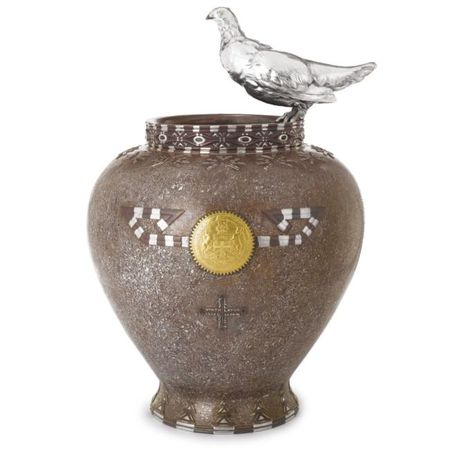




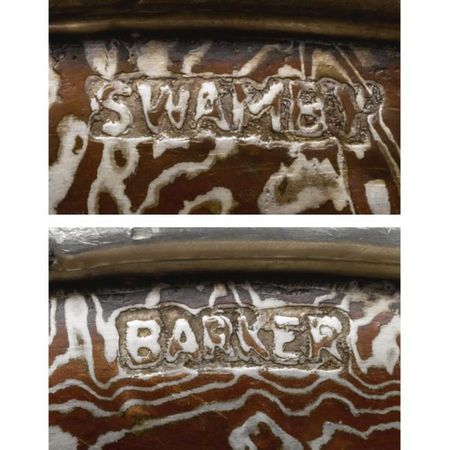


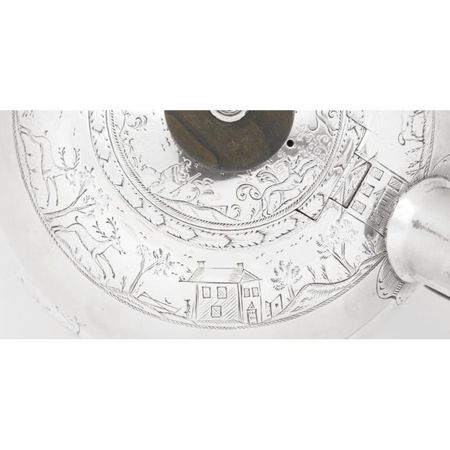


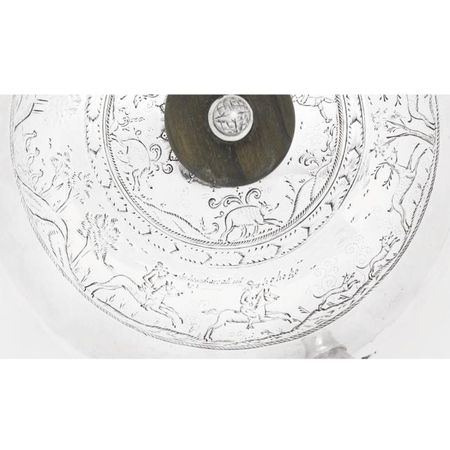






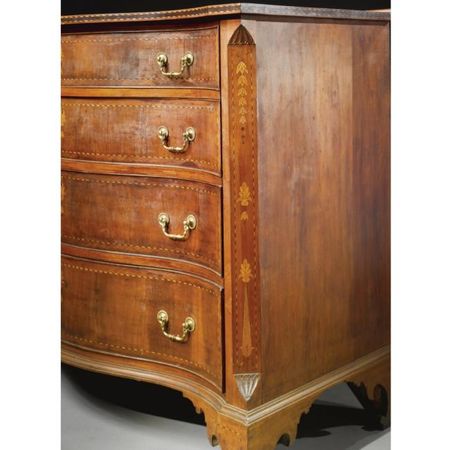

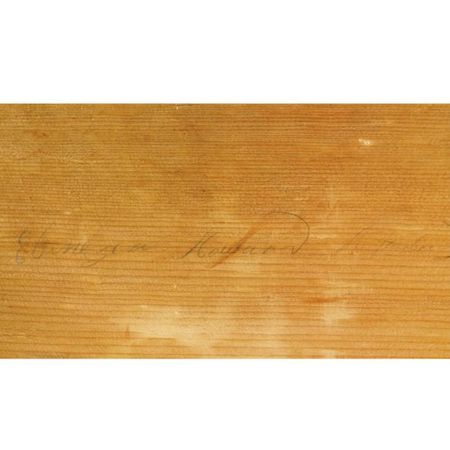



/image%2F1371349%2F20240408%2Fob_bbb9e7_2024-nyr-22642-0884-000-a-silver-hexal.jpg)
/image%2F1371349%2F20240407%2Fob_4b2318_2024-nyr-22642-0882-000-a-pair-of-silv.jpg)
/image%2F1371349%2F20240229%2Fob_c650f1_425344618-1624788374957842-51266877057.jpg)
/http%3A%2F%2Fstorage.canalblog.com%2F70%2F03%2F119589%2F129837682_o.jpg)